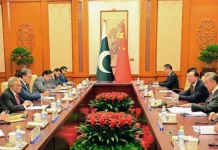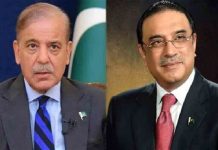DM Monitoring
Since 2014, at least 44 people have been murdered and 280 injured. The gangs acted with impunity, sometimes filming themselves, as if they’d never be prosecuted – and they were proven correct. In one Uttar Pradesh town, a Muslim man, beaten so badly that he would eventually die, was dragged injured along the ground. A photo showed a policeman clearing a path through the crowd as the mob hauled the body behind him.
On the JNU campus, Muslim students felt more and more anxious. On the day in 2017 when Yogi Adityanath, the Hindutva hardliner, was elected chief minister, a Kashmiri Muslim student was walking to a canteen. It was close to midnight. “I saw a guy, a hardcore ABVP supporter,” said the student, who asked not to be named. “As soon as he saw me, he said: ‘Now that Yogi’s here, we’ll cut down and devour the Muslims.’ He said it openly. There were a lot of people standing around. You wouldn’t have heard anything like that earlier.”
In February 2016, Kanhaiya Kumar, a communist who was then the student union’s president, was part of a campus protest against the hanging of a Kashmiri man dubiously convicted of terrorism. The ABVP called in news crews from pro-BJP channels. Over the next few days, these channels aired footage that seemed to show Kumar and others yelling slogans calling for the break-up of India. For viewers, the videos confirmed what they already suspected: that JNU was a hothouse of treason. A few weeks later, the videos were found to have been doctored.
Regardless, the BJP’s leaders kept referring to JNU’s students – and to anyone who supported them – as “anti-nationals” and traitors. The Delhi police arrested Kumar and charged him under a century-old sedition law. When the police took him to the courthouse for his hearing, they encountered a mob of dozens of lawyers and at least one BJP legislator hollering slogans. “Shoot him!” they shouted. Then, inside the courthouse, while the police stood by, the mob beat Kumar up. Afterwards, a news report said, one of the attackers claimed with satisfaction: “Our job is done.”
After the February 2016 protest, the Kashmiri JNU student learned that police had visited his home in Srinagar, in Kashmir, and taken down a host of details about him and his family. He hadn’t even been at the protest, he said. Then he discovered that every Kashmiri student he knew in JNU had a similar story to tell. It shook him. “We decided – a group of us – that we’d just stay out of things having to do with politics,” he said. “We’re vulnerable here.” A little over a year ago, when he was going to the campus library one morning, he saw a big truck filled with people shouting slogans about the Ram temple in Ayodhya. Out of a set of loudspeakers on the truck, music from the Hindutva songbook poured out. Accompanying the truck, he said, were “people on bikes, people on foot – and they were outsiders, not students,” he said. “I thought: ‘The goons have come inside.’”
In 2016, Modi’s government installed at the head of JNU an engineering professor named M Jagadesh Kumar. The students and the press described Kumar as an RSS loyalist – part of the government’s wider campaign to seed universities and cultural institutions with RSS appointees. Kumar denied any links with the RSS.
On the evening of 5 January, as the attacks on campus escalated, Kumar messaged the police via WhatsApp, according to a police enquiry report. Instead of requesting help in curbing the mob, though, he asked for police to be stationed outside the gate. (Later, to a reporter, he said that he’d wanted campus security to tackle the assaults, which he called “unfortunate.”) Only at 7.45pm did a JNU official ask the police into the campus to intervene, but by then the violence had ended. The attackers were still on the premises hours later, but the university and the police let them leave, as if they’d dropped by for a visit and were now hurrying to catch the last bus home.
Even before the ABVP attacks, JNU had been seething. For weeks, the student union had been aggressively opposing a fee hike, boycotting registrations and forcing classes to be suspended. When the nationwide demonstrations



